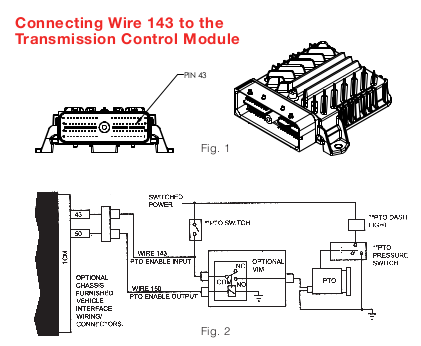Increase PTO Lifespan and Torque Capacity
Featured in Muncie Power Quarterly, Issue 1, 2016
In the old days, power take-off (PTO) controls on a truck meant little more than a clutch pedal, a cable, a hand, and a foot. Engaging the PTO was not much different than shifting into gear on a manual transmission: clutch in, engage PTO, ease clutch out.
Fast forward to the trucks of today, PTO controls have advanced to the point where the truck itself is calling the shots.
PTOs are now directly connected to the transmission controls, and the operator is simply requesting PTO engagement. Once the truck computer has determined that all conditions have been met to safely allow engagement, the PTO comes on.
One of the applications following this model is that of the Allison 3000/4000 Series transmission with a clutch shift PTO. These transmissions require that a connection be made between the PTO and the Allison transmission control module (TCM), now in its fifth generation. This connection is commonly referred to as connecting to the PTO enable circuit, and is necessary to achieve maximum oil pressure from the transmission for engagement.
We have recently discovered that this connection is often not made when the PTO is installed. What happens if this connection is not made? The main transmission oil pressure is modulated, which means that the pressure available for PTO engagement fluctuates based on engine speed.
 This pressure is increased substantially (30% or more) when the transmission control sees a request for PTO engagement. If the connection to the PTO enable circuit is not made, pressure is still available from the transmission and the PTO will engage; however, engagement pressure may be below the acceptable level. This has the potential to greatly increase wear and tear on the clutch pack inside the PTO due to slippage, resulting in a significant reduction in PTO lifespan and torque capacity.
This pressure is increased substantially (30% or more) when the transmission control sees a request for PTO engagement. If the connection to the PTO enable circuit is not made, pressure is still available from the transmission and the PTO will engage; however, engagement pressure may be below the acceptable level. This has the potential to greatly increase wear and tear on the clutch pack inside the PTO due to slippage, resulting in a significant reduction in PTO lifespan and torque capacity.
To make the connection to the Allison TCM, the TCM box must first be located on the truck. This box, shown in figure 1, can be positioned nearly anywhere on the truck. As a result, it may be necessary to contact the truck manufacturer to determine its location. Once the TCM has been found, the connection can be made.
Typically this connection is made to wire 143, but there are several different wiring options available from the factory. Consequently, it is important to verify which vocational package the truck has been equipped with before installing the PTO circuit. An example of an installation using wire 143 is shown in figure 2.
A quick phone call and simple connection to the TCM can mean all the difference in the lifespan and engagement of the PTO.


